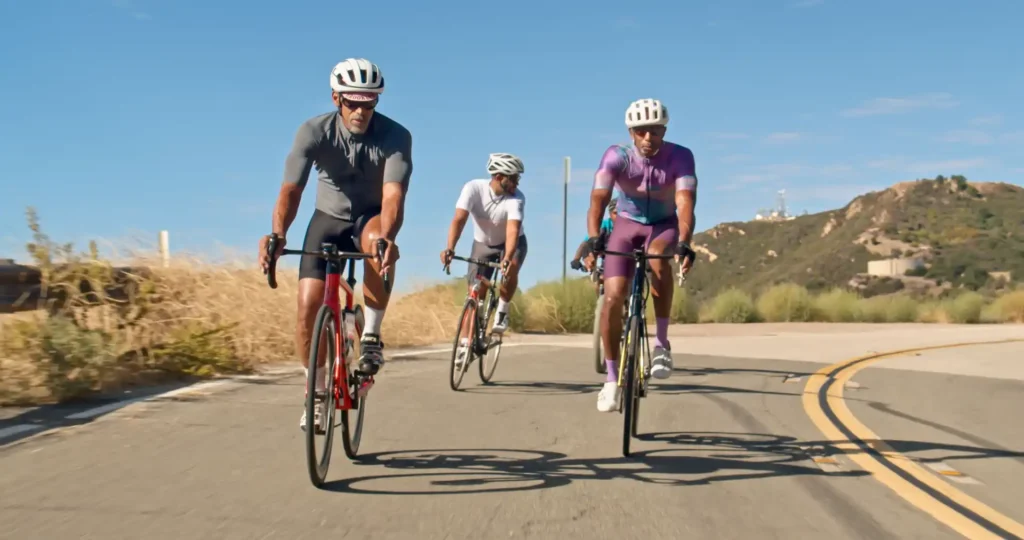Cycling is an excellent way to stay fit, improve your health, and enjoy the outdoors. Whether you’re aiming to lose weight, build muscle, or simply boost your overall well-being, cycling is a low-impact, fun, and efficient exercise. If you’re new to cycling or looking to start a fitness routine, this beginner’s guide will walk you through everything you need to know to get started.
Why Cycling is Great for Fitness
Cycling offers numerous health benefits. Some of the most notable include:
-
Cardiovascular Health: Cycling is a fantastic way to improve your heart health. It increases your heart rate, improving blood circulation and strengthening your cardiovascular system.
-
Low-Impact Exercise: Unlike running or high-impact activities, cycling is gentle on your joints, making it suitable for people of all fitness levels and ages.
-
Weight Loss: Regular cycling helps burn calories, which can aid in weight loss. Depending on your intensity and speed, you can burn anywhere from 300 to 600 calories per hour.
-
Builds Strength and Endurance: Cycling targets your leg muscles, especially the quadriceps, hamstrings, calves, and glutes, helping to build strength and improve endurance over time.
-
Improves Mental Health: Like many forms of exercise, cycling has a positive impact on mental health. It reduces stress, boosts mood, and enhances cognitive function.
Now that you know why cycling is great for fitness, let’s dive into the steps to start cycling for fitness.
Step 1: Choose the Right Bike
Before you hit the road, you’ll need to choose a bike that suits your needs. There are several types of bikes, each designed for different types of riding:
-
Road Bikes: Best for riding on smooth, paved surfaces. They’re lightweight, efficient, and built for speed.
-
Hybrid Bikes: A versatile choice, combining features of road and mountain bikes. Ideal for casual riders who want to ride on a mix of surfaces.
-
Mountain Bikes: Designed for rough terrain, mountain bikes are perfect for off-road cycling, though they can also be used on paved roads if needed.
-
Electric Bikes (E-bikes): If you want a bit of help while cycling, e-bikes offer pedal assistance, making hills and longer rides more manageable.
Choose the bike that fits your fitness goals and riding environment. If you’re new to cycling, a hybrid bike is often a great starting point.
Step 2: Get the Right Gear
Cycling requires a few essential pieces of gear to ensure comfort, safety, and performance:
-
Helmet: Always wear a helmet to protect your head in case of an accident. Choose a comfortable, well-fitting helmet that meets safety standards.
-
Cycling Clothing: Invest in padded shorts to reduce discomfort from the saddle, and moisture-wicking clothes to keep you cool and dry. For longer rides, cycling gloves and a jersey can enhance comfort.
-
Cycling Shoes: Look for shoes with stiff soles that will give you better power transfer to the pedals. If you’re planning on clipless pedals, you’ll need shoes designed to attach to them.
-
Water Bottle and Holder: Staying hydrated is crucial, so make sure you have a water bottle attached to your bike for easy access during your ride.
Step 3: Start with Easy Rides
If you’re new to cycling, it’s important to start slow and build your fitness gradually. Begin with short rides on flat terrain to get used to the motion and improve your bike handling. Aim for 20-30 minutes of cycling at a comfortable pace, and slowly increase your distance and intensity as your endurance improves.
As a beginner, try to ride at a steady pace, aiming to maintain a heart rate that allows you to hold a conversation without gasping for air. You can use a fitness tracker to monitor your heart rate, or simply listen to your body.
Step 4: Focus on Technique
Proper cycling technique can make your ride more efficient and reduce the risk of injury. Here are some key tips to keep in mind:
-
Posture: Keep your back straight, elbows slightly bent, and hands relaxed on the handlebars. Avoid leaning too far forward or hunching over.
-
Pedaling: Aim for a smooth and consistent pedaling motion. Instead of just pushing down on the pedals, think about a circular motion—pushing down, pulling back, lifting up, and then pushing forward.
-
Cadence: This refers to how fast you pedal. Aim for a cadence of around 70-90 revolutions per minute (RPM). This is an efficient pace that will help you conserve energy during longer rides.
Step 5: Build Your Fitness Level
As you get comfortable with cycling, gradually increase your intensity. Here are a few ways to challenge yourself:
-
Increase Distance: Slowly increase your ride distance by 5-10 miles each week, depending on your fitness level.
-
Vary Terrain: Try riding on different terrains to work your muscles in new ways. Incorporate small hills into your ride to improve strength and endurance.
-
Interval Training: For a more intense workout, incorporate intervals into your ride. Alternate between faster bursts of cycling and slower recovery periods to improve cardiovascular fitness.
Step 6: Set Goals
Setting fitness goals will keep you motivated and give you something to work towards. Some examples of goals you can set include:
-
Completing a certain distance or duration, such as riding for 30 minutes every day for a month.
-
Increasing your speed on a particular route.
-
Training for a local cycling event or charity ride.
Step 7: Listen to Your Body
As with any fitness routine, it’s important to listen to your body and avoid pushing yourself too hard too soon. If you experience pain or discomfort, take a break and consult a professional if needed. Consistency is key, but rest and recovery are just as important as training.
Conclusion: Enjoy the Ride
Cycling for fitness is a rewarding, enjoyable, and effective way to improve your overall health. By following these beginner-friendly tips, you can start cycling confidently, improve your fitness over time, and have fun while doing it. Whether you’re cycling to lose weight, improve endurance, or just enjoy the outdoors, the benefits of cycling will keep you motivated to ride more.
So, grab your bike, put on your helmet, and hit the road. The journey to better fitness begins with just one pedal stroke!

